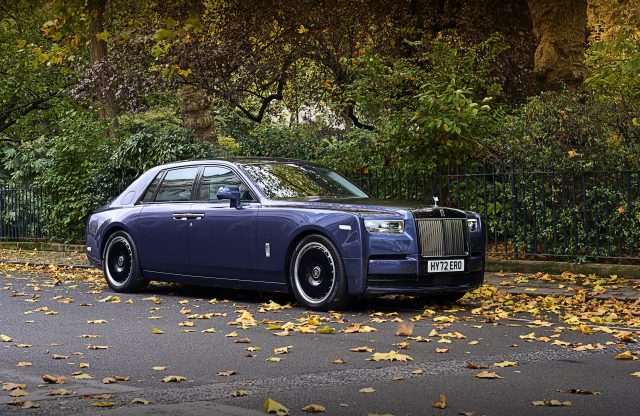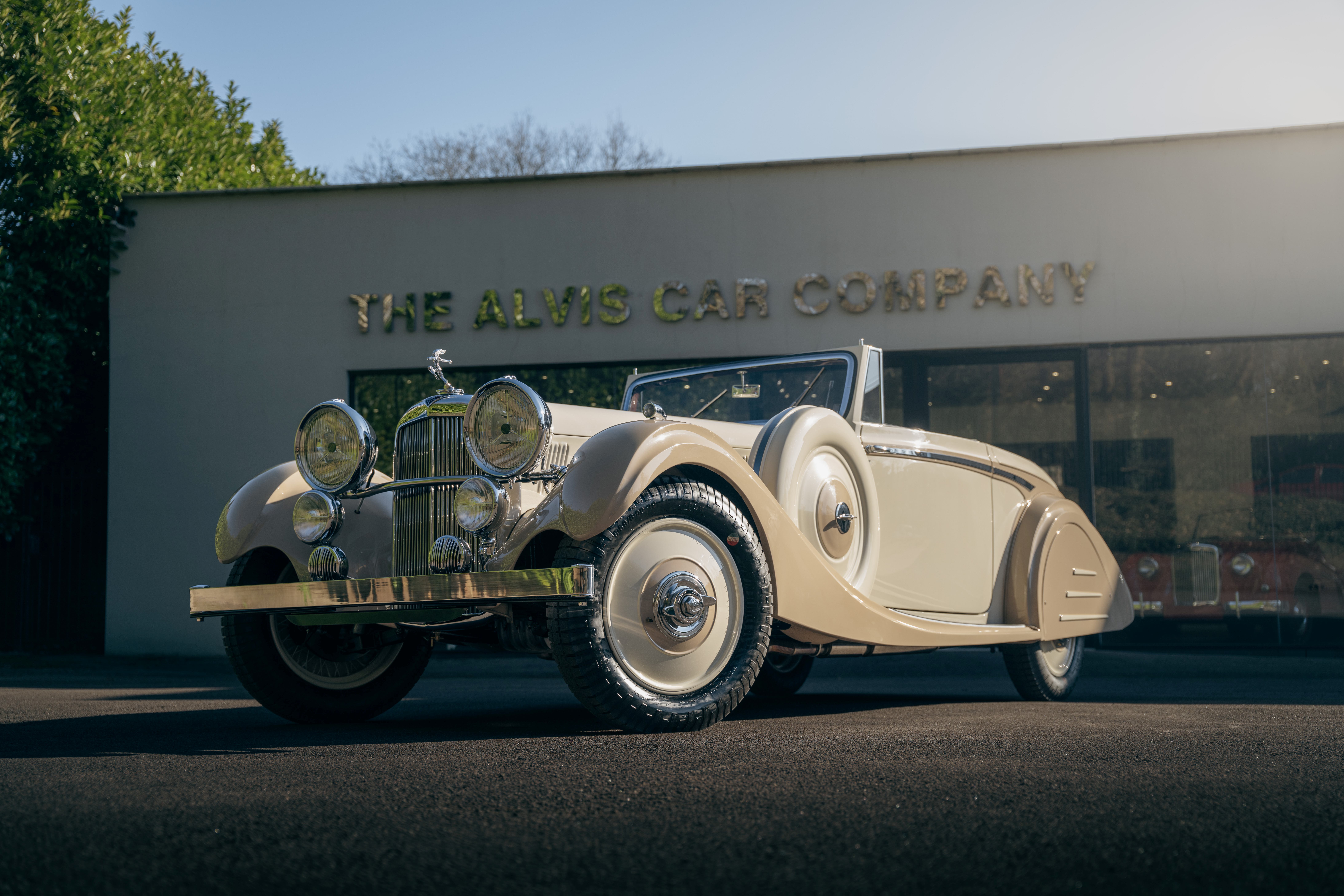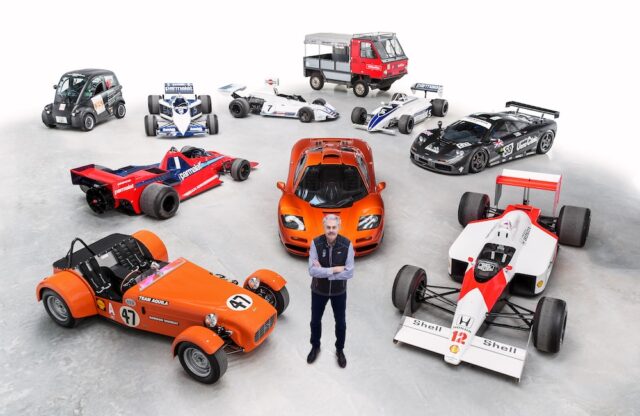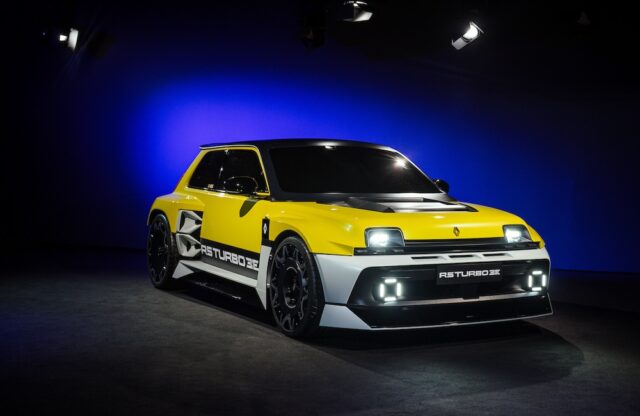WORDS: ELLIOTT HUGHES | PHOTOGRAPHY: ROLLS-ROYCE
It’s 4.55am. In a zombie-like state I drag myself out of bed, grab a strong coffee and make a beeline for Newark Northgate station to join my fellow bleary-eyed passengers on the next commuter train to Kings Cross, London. The unglamorous start to the day is one that many of us can empathise with, and is in stark contrast to what awaits when I finally arrive at Rolls-Royce’s Mayfair showroom.
The crescendo of noise confirms that the capital has awakened from its brief slumber, as my amiable driver ushers me into the rear seat of a Rolls-Royce Phantom VIII that’s parked imposingly by the kerbside. Still weary from joining the logistical dots of car-train-tube-taxi, I need little encouragement to ensconce myself within the Phantom’s cavernous sea of leather.
Once inside the soundproofed cocoon, I simply press a piano-black button on the inside of the C-pillar and the rear coachdoor gracefully closes, sealing itself shut with a mechanical snick. You could hear a pin drop. London’s uncouth cacophony is reduced to a muffled murmur. It almost feels rude to wear shoes in such a palatial environment; feet sink into luxurious lambswool carpets that are so thick they look like they’ve left an Inuit at the mercy of the elements.
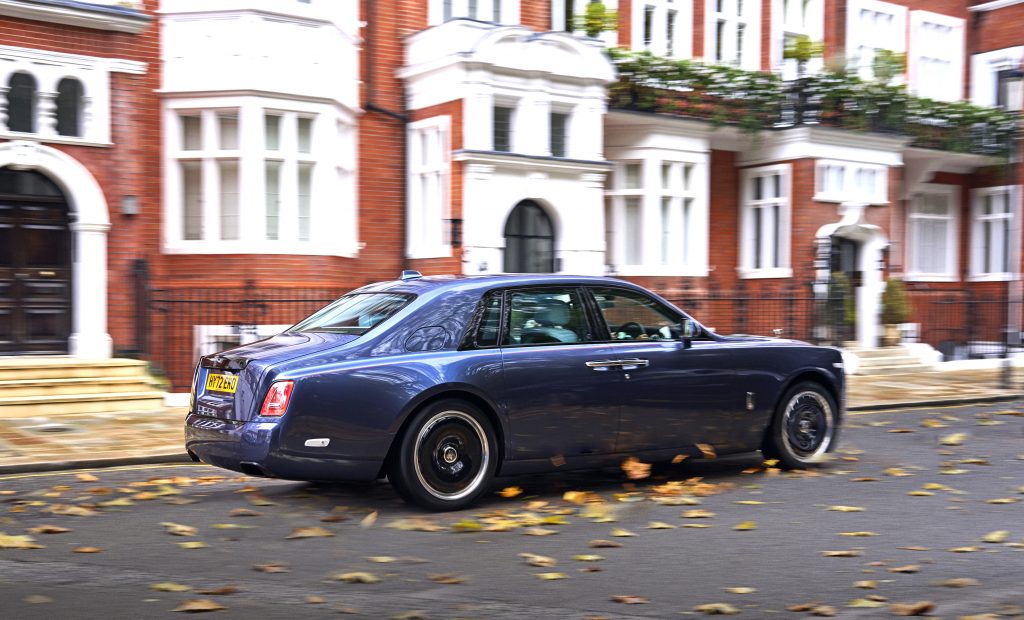
We set off to our first location – the exclusive members-only Hurlingham Club – for a brief photoshoot, gliding our way through the bedlam of city traffic at rush hour. Not that you’d know from the back seat – or would you care. You can kill a good ten minutes toying with the endless adjustability of the massaging plush rear seats which, naturally, are both heated and cooled.
Whimsically push, twist or pull any button, dial or organ stop you desire, and your fingers are met with only the finest-quality materials – even the rear floor vents and microphone speaker trim are made from gleaming polished metal. Doing my best Sir Alan Sugar impression, I lower the sturdy picnic table from the back of the driver’s seat, pull out my laptop and reply to work emails in total serenity. The occasional curious pedestrian attempts to peer through the double-glazed window, wondering which member of the glitterati is passing them by. If the glass wasn’t tinted, they’d be disappointed.
Our arrival presents the perfect opportunity to drink in the Phantom’s imperious exterior as it’s snapped in front of the Hurlingham Club’s Georgian architecture, whose stateliness is rivalled only by the Phantom’s styling. At nearly six metres long and over two metres wide, this car’s proportions are far from subtle.
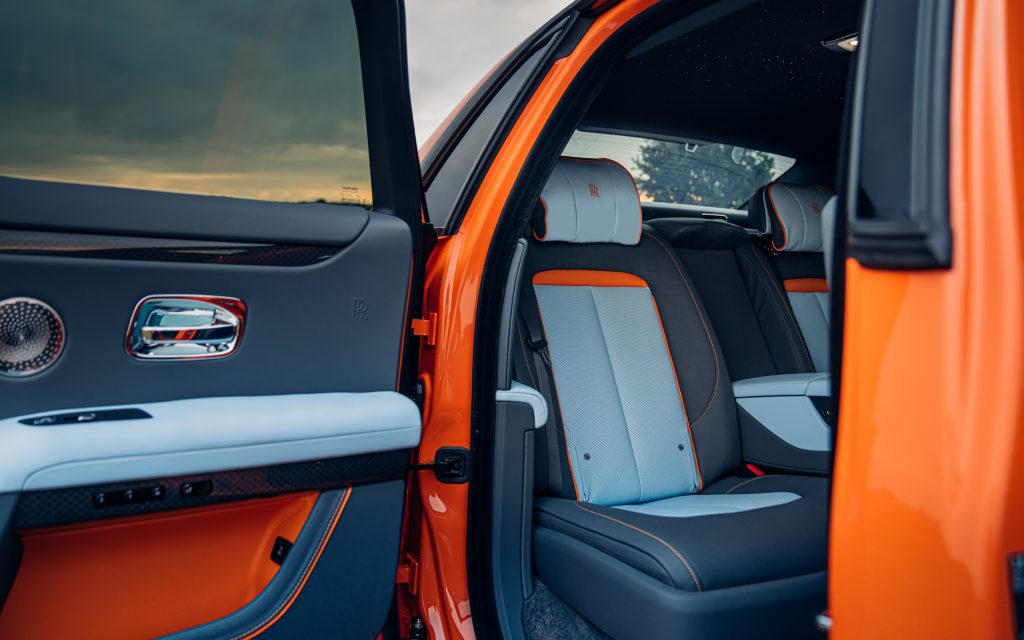
It’s obvious the marque has been very conservative in updating the VIII’s exterior over its predecessor – unapologetically so. After all, it’s Rolls-Royce itself that says with the Phantom: “It is not what should be changed, but in fact, what should be preserved and protected.” Perhaps that’s unsurprising for a nameplate that goes back to 1925.
But there are a few changes to speak of. The front end is still dominated by the marque’s iconic Pantheon Grille, yet it is now illuminated and sits flusher to the bodywork for a more contemporary appearance. While the grille is more recessed, the iconic Spirit of Ecstasy mascot and ‘RR’ badge are more prominent. The grille is flanked by modernised, slim headlights inset with 380 laser-cut bezel starlights that are reminiscent of the Starlight Headliner found in the interior.
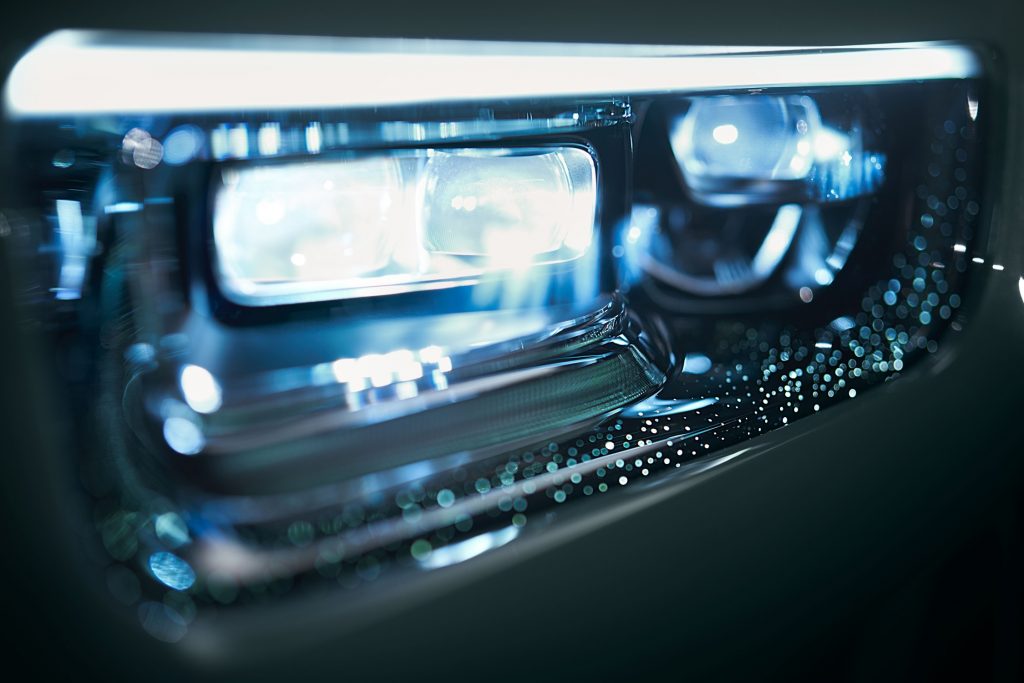
The side-profile’s split beltline, short overhangs and thick, curvaceous C-pillar that flow into the tapered rear end remain familiar Phantom styling cues, as are the lantern-shaped rear lights. Our car is fitted with optional 22-inch disc wheels that Rolls says were inspired by the Gatsby-spec Phantoms of the 1920s but remind me of the rims fitted to a Jaguar XJ220. Either way, they look fantastic and are surely a must-have for any customer perusing the Phantom options list.
But a pertinent question remains: does the experience from the driver’s seat match up to that of the rear? Such a query would have been inconsequential in the past, as blue-blooded Phantom owners of old would have exclusively inhabited the rear seats. However, times are changing; the average age of a Rolls customer is now just 42, and many wish to experience their cars from behind the steering wheel, hence the marque’s recent driver-focused line of Black Badge models.
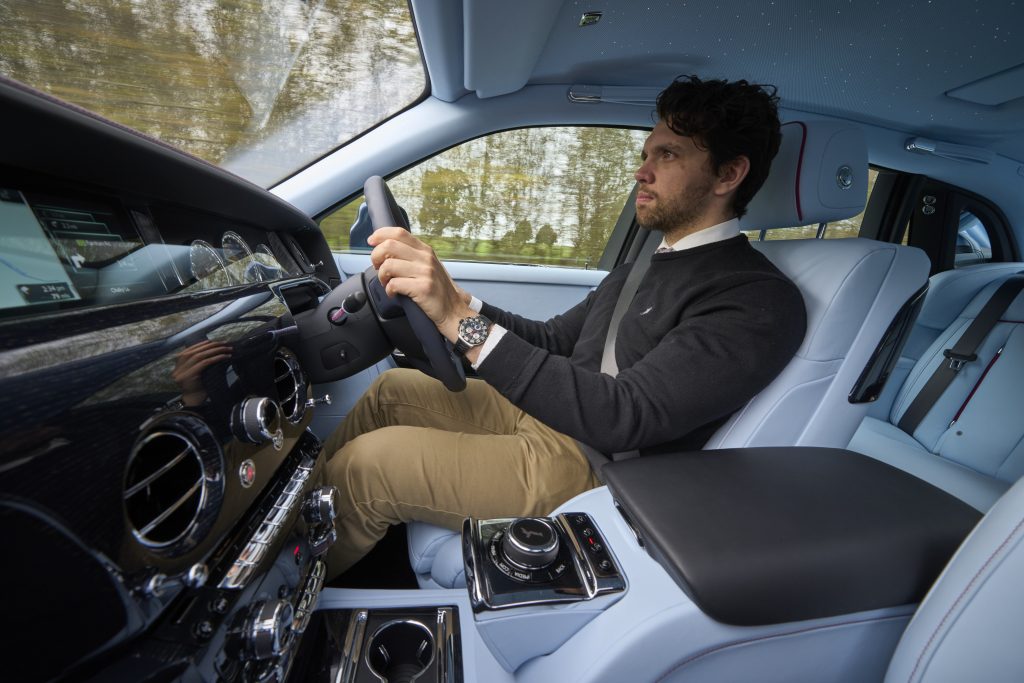
To answer that all-important question, I climb into the driver’s seat. Sitting behind the wheel of a Phantom for the first time is both special and daunting in equal measure. Look ahead and the Spirit of Ecstasy seems a very long way away, perched on the end of the car’s runway of a bonnet. A glance in the wing mirror reveals a vast amount of real estate behind you, which can make pulling out of junctions something of a nervy experience. Even the mildest indignity of kerbing those beautiful wheels is a source of palpable anxiety.
The luxurious embrace of the driver’s seat offers a welcome distraction from such thoughts. Enable the massage function, set the climate control just so, and you already start to feel at home. Each touchpoint feels as tactile and high quality as they do in the rear of the car, with the odd exception of the plastic indicator stalks and column selector, which I flick into ‘Drive’.

Fortunately, the light steering and plethora of parking cameras and sensors mean that manoeuvring the Phantom at low speed is no more challenging than it is in a large SUV. The throttle and brake pedals are also perfectly judged, which makes smoothly chauffeuring your passengers through stop-start traffic an easy task.
Once mercifully liberated from London’s inner-city congestion, it’s time to stretch the car’s legs for a stint of A-road dual carriageway, before our final dinner stop at The Newt in Somerset. The massive twin-turbocharged 6.75-litre V12 is as near-silent at motorway speeds as it is in the city. Press the accelerator pedal into the deep carpet, and the engine’s 563bhp and 663lb ft surge you towards the horizon with surprising rapidity. 0-62mph is completed in just 5.1 seconds and top speed is ‘governed’ – as Rolls-Royce puts it – to 155mph. The straight-line performance is seriously impressive for a car that weighs over two-and-a-half tonnes.
The eight-speed automatic transmission is equally impressive. The satellite-aided system pre-selects gears based on the behaviour of the driver and the geographic location of the car. The result is that ratios are swapped so smoothly that it’s almost imperceptible, even when accelerating in Low Mode, which is Rolls-Royce’s version of Sport. But it goes without saying that the Phantom is no sports car, and the serenity of the driving experience encourages you to simply waft down the road rather than engage in unseemly rushes of acceleration.
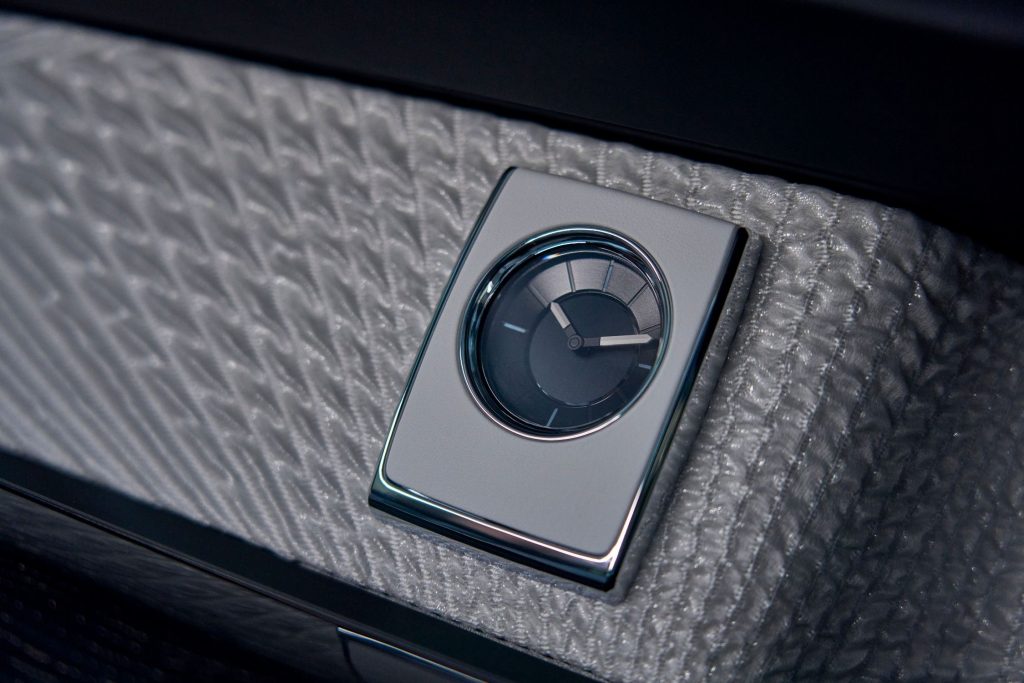
Underpinning the pervading sense of calmness is the ride, which from the driver’s seat feels nothing short of spectacular as your eyes scan for all manner of potholes and imperfections ahead. In most other cars, a pothole, speed-hump or crack in the road will send varying levels of vibration or shudder through the suspension, chassis and steering, but not so in the Phantom. The secret behind the cloud-like ride is fully independent air-suspension, which is paired with the company’s Flagbearer camera system that scans the road ahead and automatically prepares the dampers for whatever the surface imperfection might be imminent. Several clever mass dampers and bespoke foam-filled Continental tyres enhance the effect, making Phantom occupants feel as though they’re levitating over the asphalt like the Spirit of Ecstasy itself.
Throw in radar-guided cruise control, a lane-assist system that politely vibrates the steering wheel, and an excellent head-up display, and all there is to do is relax and enjoy the Phantom’s studio-quality Bespoke Audio system. With 18 speakers, two subwoofers and a 1300-watt amplifier, it’s the best system I’ve ever come across in a car, creating a crisp undistorted sound no matter the volume level selected.
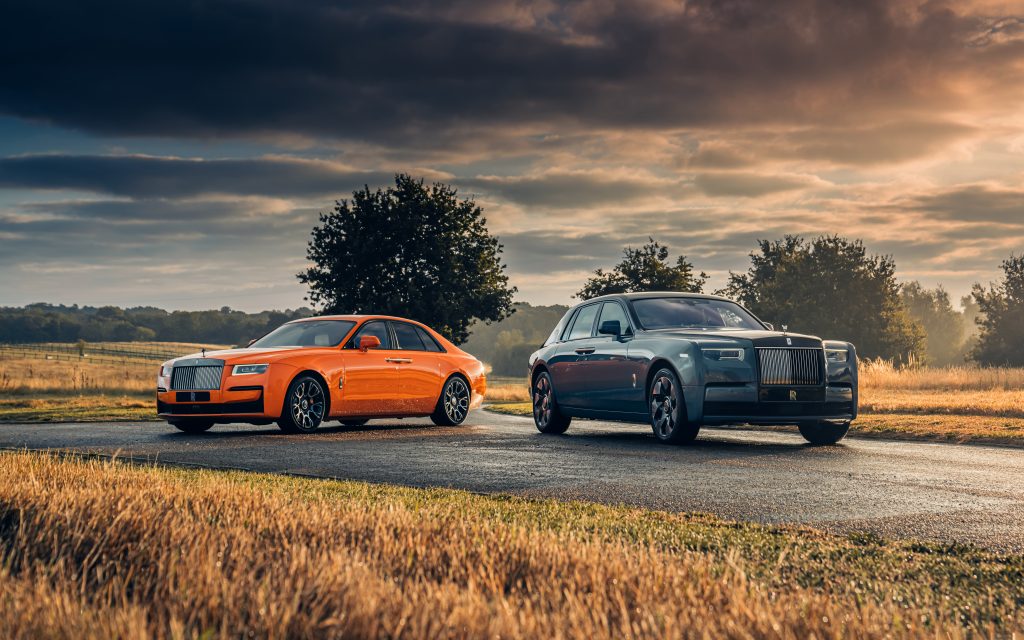
While the odometer climbs, dual carriageways quickly become tight rural lanes as I drive deeper into Somerset. Of course, the Phantom feels large on such roads but surprisingly easy to manage – far from the daunting behemoth it appears to be when you first get behind the wheel. The rear-wheel-steer system certainly helps in this respect, effectively shortening the wheelbase for greater agility and manoeuvrability than a car of this size has any right to possess.
With daylight rapidly fading and the Starlight Headliner twinkling into view for the first time, the journey is over. It’s remarkable how fresh I feel for someone who has had so little sleep after such a long day of travel. This alone is indicative of the fact that the Rolls-Royce Phantom VIII has succeeded in continuing the 97-year-old nameplate’s reputation as the last word in luxury. But even more impressive is the fact that Rolls-Royce has managed to make the Phantom VIII just as enjoyable to drive as it is to relax in from the back seat.
It was 1907 when The Autocar famously dubbed Rolls-Royce as the “best car in the world”. While today such a claim is subjective, the fact the Phantom remains the apex of luxury motoring is an achievement that the company is surely proud of.
Rolls-Royce Phantom VIII pricing starts from £360,000/$420,000. For more information, click here.
